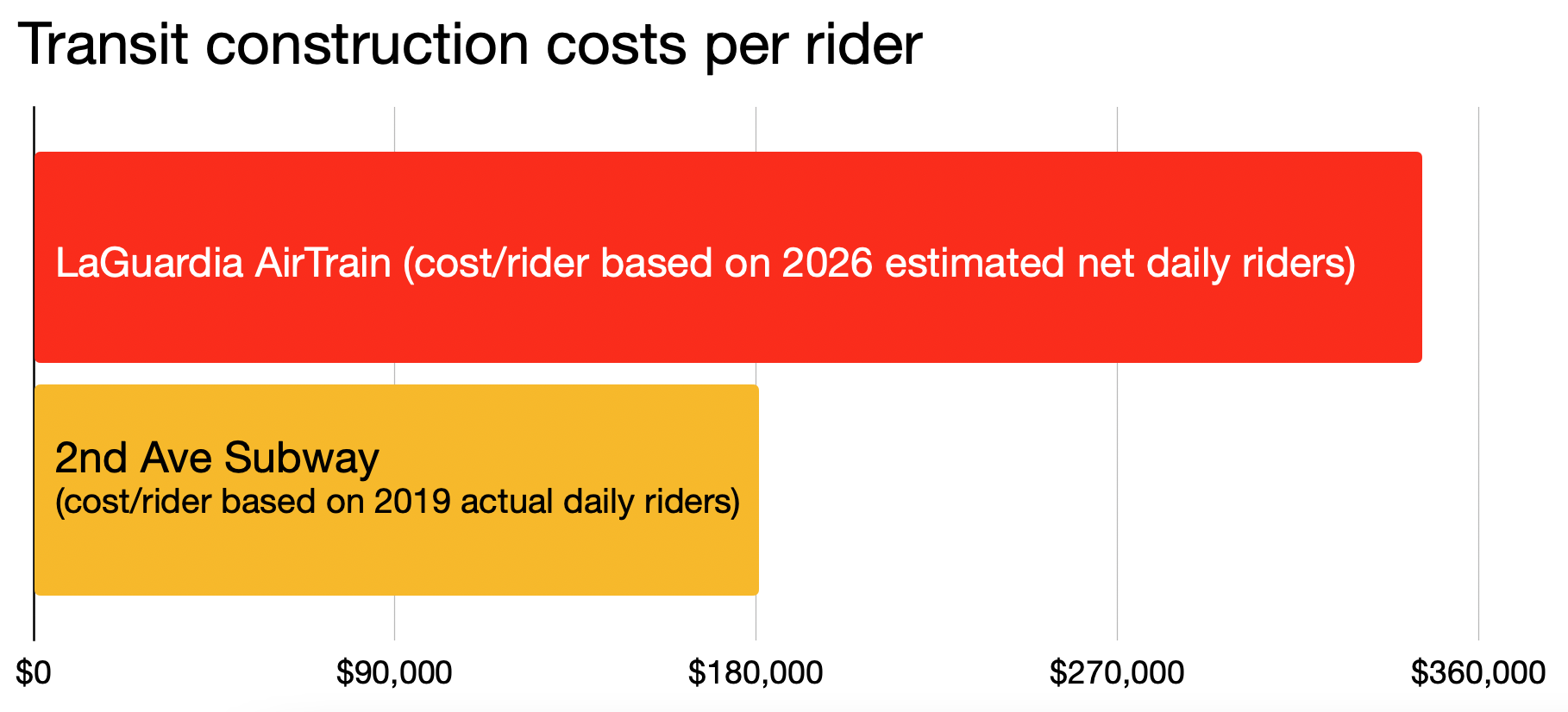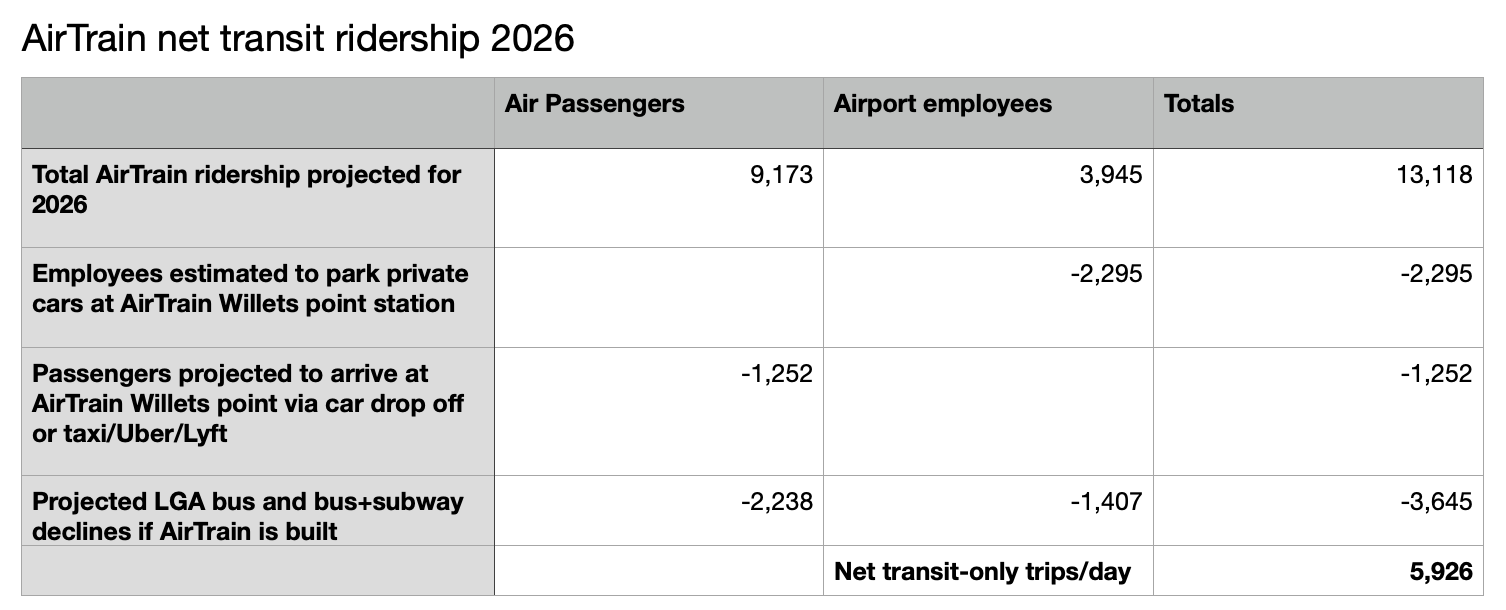LaGuardia’s $2B Airtrain Would Be World’s Most Costly Transit
LGA AirTrain will cost at least $2.05B but carry only 6,000 new daily transit riders
A new report from Reinvent Albany finds that the LaGuardia AirTrain will stand alone as the world’s most expensive transit project per rider if Governor Hochul allows the Port Authority to proceed with the Cuomo-era project.
Experts believe the current Second Avenue Subway was the most costly transit project ever built, but the LaGuardia AirTrain will be about twice as expensive, when comparing construction costs to daily ridership.
In 2019, the Second Avenue Subway from 63rd to 96th street generated 30,847 new daily riders net of 2016-2019 declines at nearby Lexington line stations, for a capital cost of $5.57 billion or $180,500 per rider.
Based on Port Authority ridership estimates, we believe the LGA Airtrain will carry fewer than 6,000 net transit trips a day. The Port Authority’s Final Environmental Impact Statement (FEIS) for the LaGuardia AirTrain estimates that by 2026, Airtrain will carry 9,173 air passengers and 3,945 airport employees daily for a total of 13,117 daily riders. However, the FEIS clearly shows that automobile trips to the train by airport employees parking at Willets Point and taxis and private cars dropping off passengers, are a big share of all Airtrain riders. (Importantly, the FEIS does not say how many rental car users from will probably use the Airtrain to get to and from Willets Point, which we believe will be substantial.) Therefore, we calculate $2.05B project cost/6,000 net daily riders equals $346,000 per Airtrain rider — nearly twice as expensive as the Second Avenue Subway.

Based on the Port Authority’s own FEIS, a large part of what the LGA Airtrain does is provide an extremely expensive shuttle service for airport employees parking their cars, long-term parkers, rental car customers and taxi drop-offs travelling from Willets Point to the LGA terminals. As such, the LGA project is more about making it easier to drive and park at LaGuardia than creating a superior transit option. Accordingly, we think the Port Authority’s claim that the AirTrain is climate friendly is completely bizarre.
- The 13,000 daily rider claim is overstated because the FEIS projects that 1,252 daily AirTrain air passengers will arrive at the AirTrain by car (drop-off or taxi/Uber/Lyft). Furthermore, the Port Authority’s assessment of airport employees indicates that 2,295 will park private cars in Willets Point and use the AirTrain for a last stage of their commutes. These 3,547 riders will still represent car trips on streets and highways, just moved from LaGuardia to nearby segments of the street and highway systems. These car-access AirTrain trips may be even higher because the FEIS analysis is unclear in how it treats 2026 car rental airport trips.
- Netting out car-to-AirTrain trips, daily transit-only AirTrain usage in 2026 will be 9,571.
- The Port Authority’s 2018 ridership analysis also indicates that access to the airport by bus and bus+subway trips will decline by 2,238 air passengers and 1,407 employees in 2025 if the AirTrain is built. These should be also subtracted from a net transit-access analysis of the AirTrain plan, as shown below.
Sources:
FEIS Appendix B “Project Description” pp 9-11
FEIS Appendix C “Ridership”
Available at https://www.lgaaccesseis.com/final-eis-document
LGA Ground Access Mode Choice Model and AirTrain Ridership Forecast. Port Authority 2018
https://www.anewlga.com/wp-content/uploads/2018/10/LGA-AirTrain-Ridership-Report.pdf
The full report is available in PDF here.

